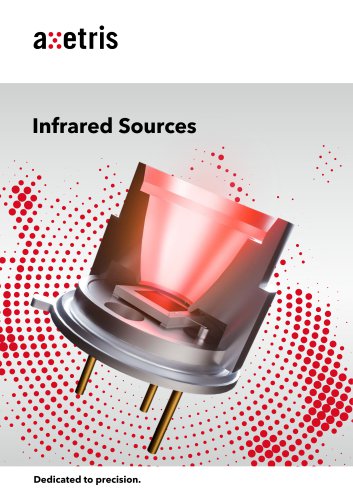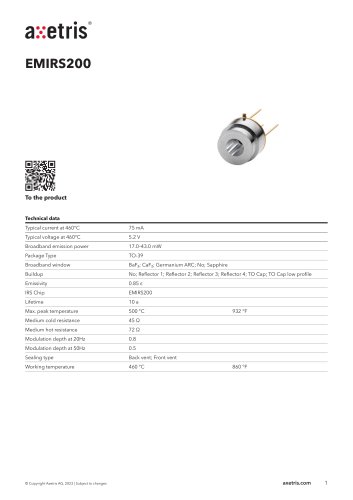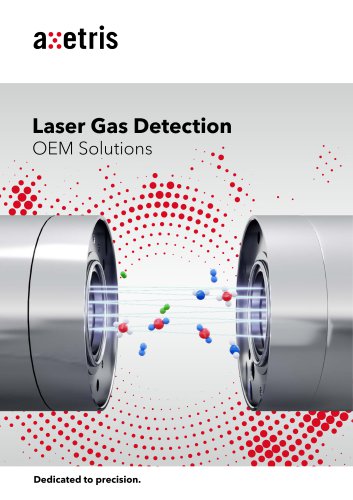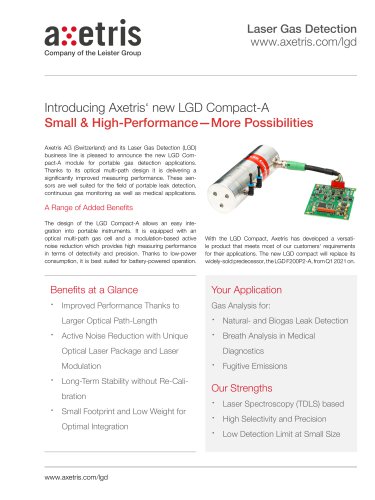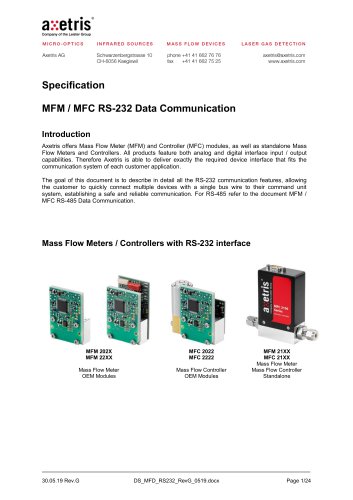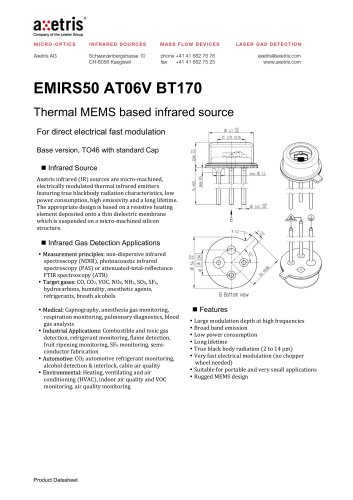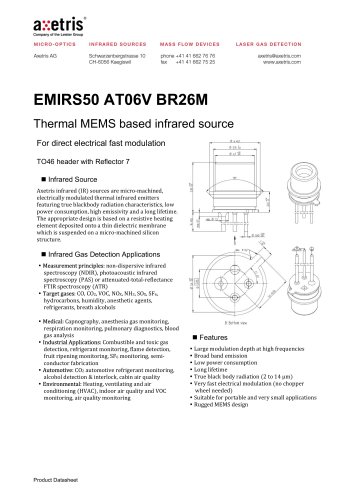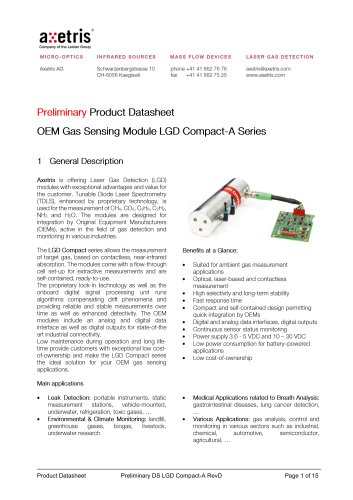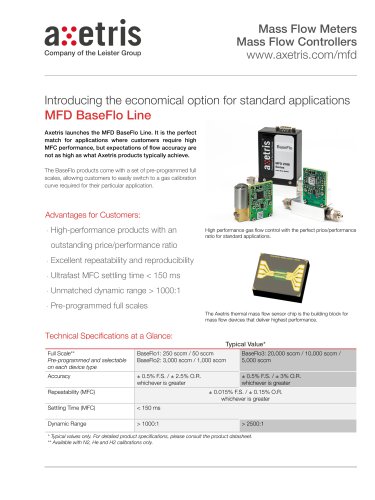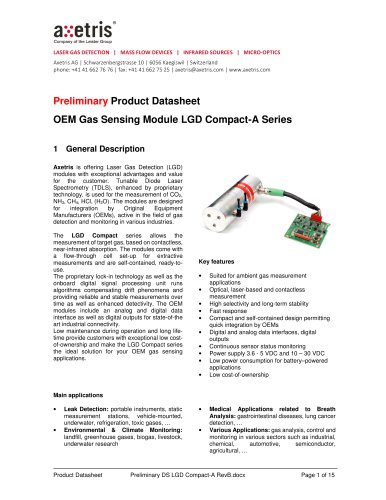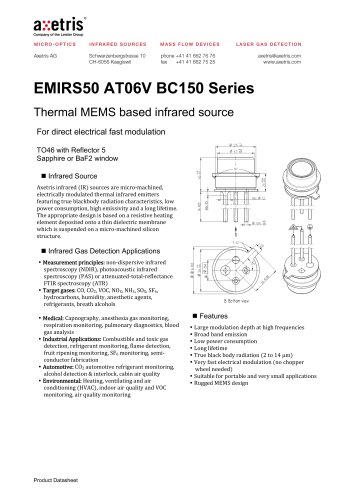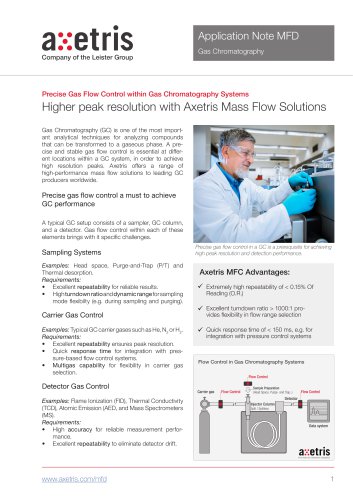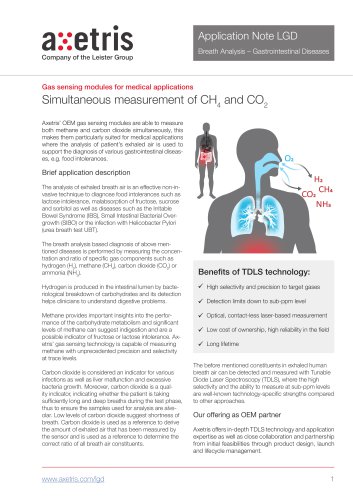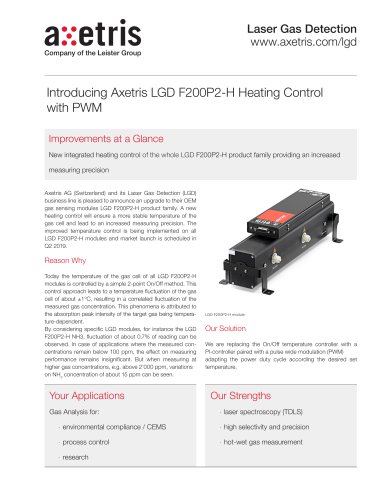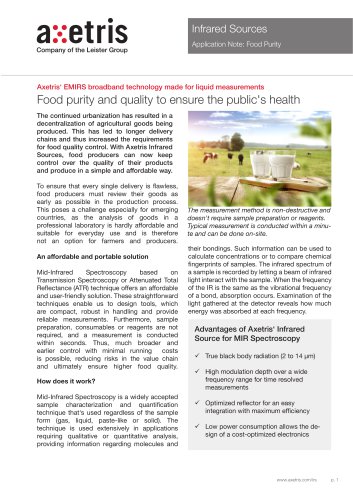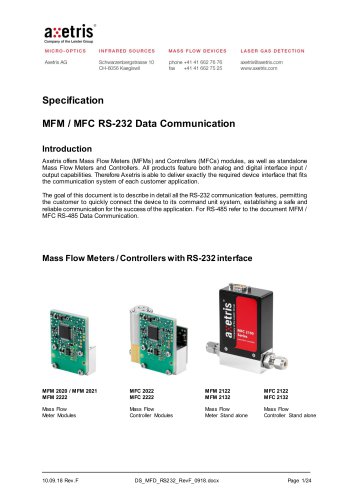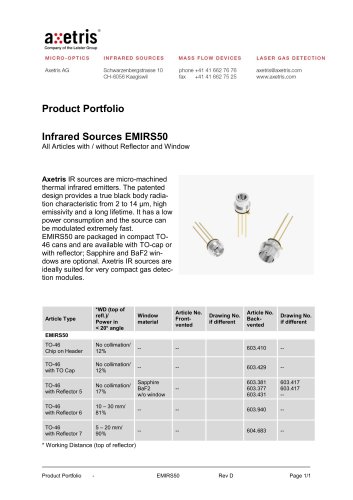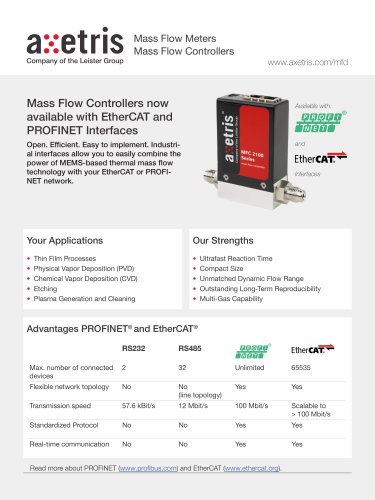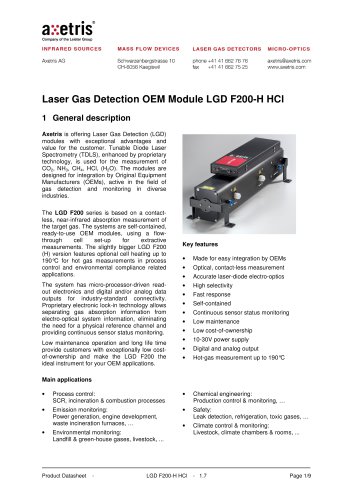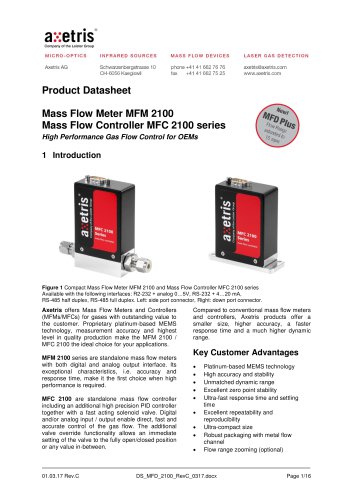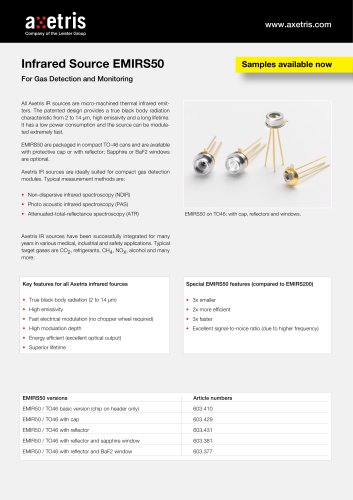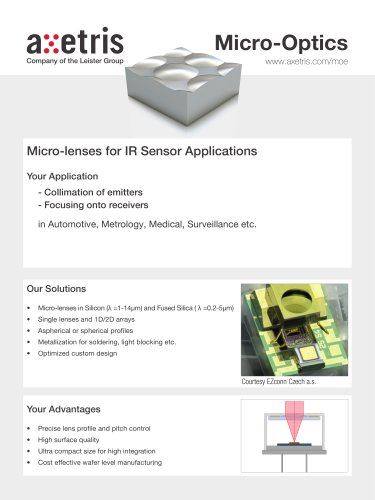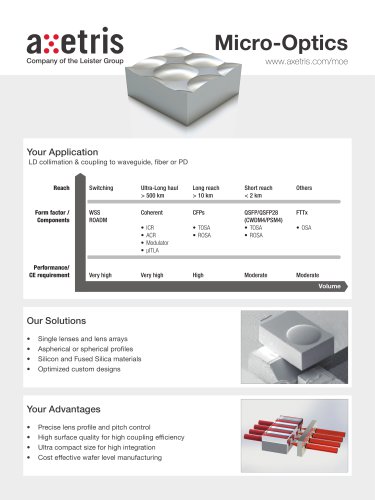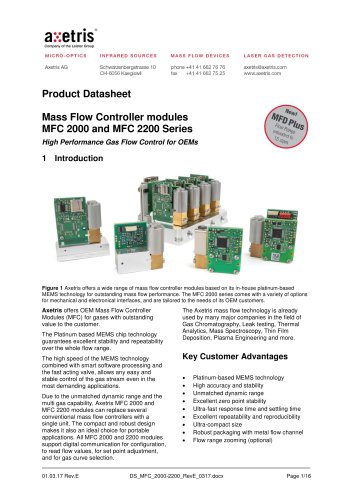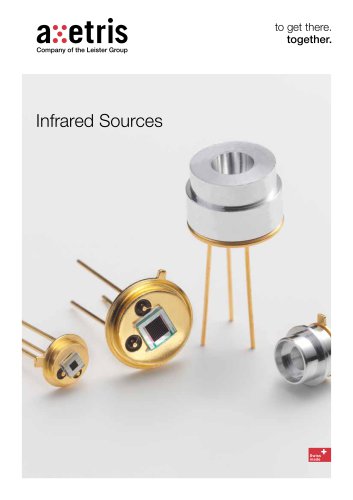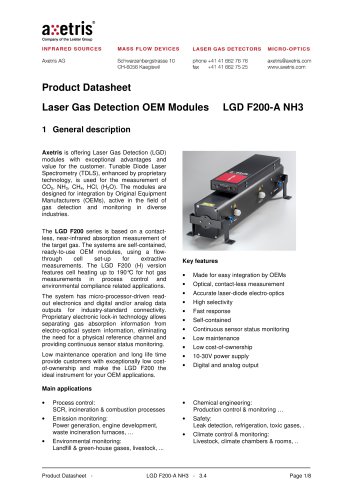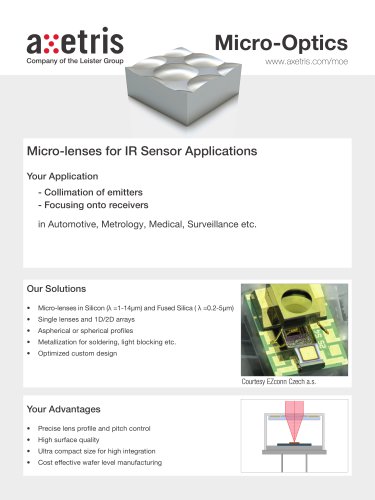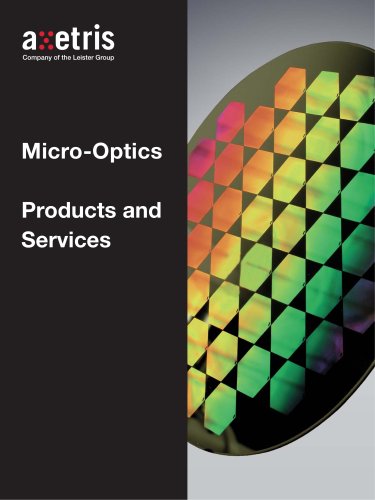
Catalog excerpts

Gas Detection With The New LGD Compact Natural gas detection in a compact way Leak detection of methane – a major component of natural gas – along gas distribution networks is growing in importance. Methane emissions from gas pipelines are a major safety hazard, as Spectroscopy (TDLS) is fast becoming a very popular method to detect methane due to key advantages such as quick response time, exceptional accuracy and lower cost of ownership than traditional NDIR (Non-dispersive Infrared Spectroscopy) or FID (Flame Ionization Detector) which is often combined with gas chromatography. Precision meets small footprint The high selectivity of methane detection rules out any false alarms due to the presence of other gases or hydrocarbons (Figure 5). The technology can measure over a wide dynamic range – from sub ppm detection up to % level, thereby eliminating the need to install multiple sensors. Finally, the size of the LGD Compact for the smaller measuring devices in portable applications is an enormous advantage (Figure 4). Thanks to the low-power consumption of the sensor, it is best suited for battery-powered operation that can last an entire working day. Breathtaking progress in medicine Breath analysis represents an effective way to investigate flatulence, diarrhea, constipation and suspected malabsorption, such as lactose and fructose. It is an alternative method to invasive diagnostics (Figure 6). Approximately half the biomarkers identified in human breath can be detected by laser spectroscopy. The spectroscopic analysis of human breath can shorten the period needed to conduct tests from hours down to seconds and subsequently detect diseases early, prevent unnecessary hospitalization and reduce medical expenses considerably. Figure 1: The new LGD Compact sensor module with attached electronics The Danish Company Explicit testing UAV Leak Detection by a drone with an integrated LGD Compact from Axetris The new LGD Compact fits in almost every application – not just due to its size Many applications in gas measurement technology today are continuously pushing the limits to have manufactures design and produce ever-smaller devices while increasing the performance. These smaller devices are able to make a variety of portable applications possible. At the same time, the demands on measurement performance and long-term stability are growing. Axetris AG introduces the new LGD Compact, an elegant solution that brings a combination of compact size and measurement performance one-step closer to ideal. With the new LGD Compact, engineers no longer have to make any compromises to meet the requirements of your measurement task (Figure 1). Proprietary TDLS gas detection technology Figure 2: Detection of up to two target gases due to the wide tunabilty range of the laser Laser Gas Detection (LGD), based on Tunable Diode Laser Spectrometry (TDLS), provides a solution to many gas detection challenges in emission monitoring and process control. The technology offers unique advantages like precise optical, contact-less measurements, excellent target gas selectivity and sub ppm-level detectivity. Axetris uses proprietary technology-enhanced TDLS for gas detection, where a 0.05 nm narrow bandwidth diode laser beam is scanned across an absorption band of the target gas (Figure 2), performing a high-resolution near-infrared absorption measurement. Electronic lock-in technology allows separating the gas absorption information from electro-optical system information, leading to a detection method eliminating the need for a physical reference channel and offering continuous sensor status monitoring. Figure 4: The LGD Compact integrated in a drone for portable UAV Leak Detection by the Danish Company Explicit The diagnosis of various gastrointestinal diseases, e.g. food intolerances, is a good example where the new LGD Compact is able to measure both methane and carbon dioxide simultaneously. This makes it particularly suited for medical applications where several components in the human breath provide information about the patient’s state of health. The high selectivity and the ability to measure at sub-ppm levels are specific strengths of TDLS technology. Axetris – A true OEM partner Besides its standard LGD modules for OEMs, Axetris also offers customized solutions for specific gas detection applications. For this, the team of Axetris development engineers and integration specialists support OEMs with in-depth knowledge of technology and applications, from prototyping up to mass production. About Axetris AG, Switzerland Axetris is a company of the Leister Group and serves OEM customers with micro-optical components, micro technology-based (MEMS) infrared light sources, mass flow meters and controllers, and laser gas detection modules used in industrial, telecom, environmental, medical, analytical and automotive applications. Figure 5: Even very low CH4 concentrations can be detected by scanning a biogas plant area with a drone Author Melanie Wahlers, Axetris AG +41 41 662 76 13 melanie.wahlers@axetris.com www.axetris.com/lgd Axetris AG Schwarzenbergstrasse 10 CH-6056 Kaegiswil, Switzerland +41 (0) 41 662 76 76 axetris@axetris.com Several advantages integrated into the LGD Compact Figure 3: Effect of Active Noise Reduction in the new LGD Compact at increasing gas cell contamination The new LGD compact combines TDLS technology with a small and lightweight designed multipass cell and a modulation-based active noise reduction (Figure 3) thanks to the unique optical laser package. Therefore, it is a perfect match for a wide range of portable instruments where performance and compact size matters. Its over-all size of less than a can with a weight of 600 g allows for an easy integration. Due to the high selectivity, second gases can be measured at the same time without interferences or confusion between the target gases (Figure 2). Thanks to the robust design and the active noise reduction technique a stable performance can be achieved even with increasing contamination of the gas cell. Axetris’ technical support can remotely access relevant functions in the product interface through the extended features in the product software and support the customer as needed. Figure 6: Detection of diseases with breath analysis is also possible for the youngest patients Figure 7: Axetris headquarter located in central Switzerland
Open the catalog to page 1All Axetris AG catalogs and technical brochures
-
Infrared Sources
12 Pages
-
Infrared Sources EMIRS200
1 Pages
-
EMIRS200
2 Pages
-
EMIRS50 AT06V BT170
8 Pages
-
EMIRS50 AT06V BR26M
8 Pages
-
EMIRS50 AT06V
8 Pages
-
EMIRS50 AT06V BR25M
8 Pages
-
EMIRS50 AT06V BC150
8 Pages
-
MFD BaseFlo Line
2 Pages
-
EMIRS50 AT06V BC150 Series
8 Pages
-
Inductively Coupled Plasma
2 Pages
-
Gas Chromatography
2 Pages
-
MFM / MFC RS-232
24 Pages
-
Infrared Sources EMIRS50
1 Pages
-
LGDF200 A CH4
8 Pages
-
LGDF200 H HCl
9 Pages
-
FL - Infrared Source EMIRS50
2 Pages
-
Micro-Optics
2 Pages
-
Infrared Sources EMIRS200
12 Pages
-
DS - LGDF200 H NH3
9 Pages
-
DS- LGDF200 A NH3
8 Pages
-
DS - LGDF200 A CO2
8 Pages
-
FL - Axetris MFD Plus
2 Pages
-
FL - LGD F200P2
2 Pages
-
Reflector
4 Pages
-
MEMS Services
2 Pages


